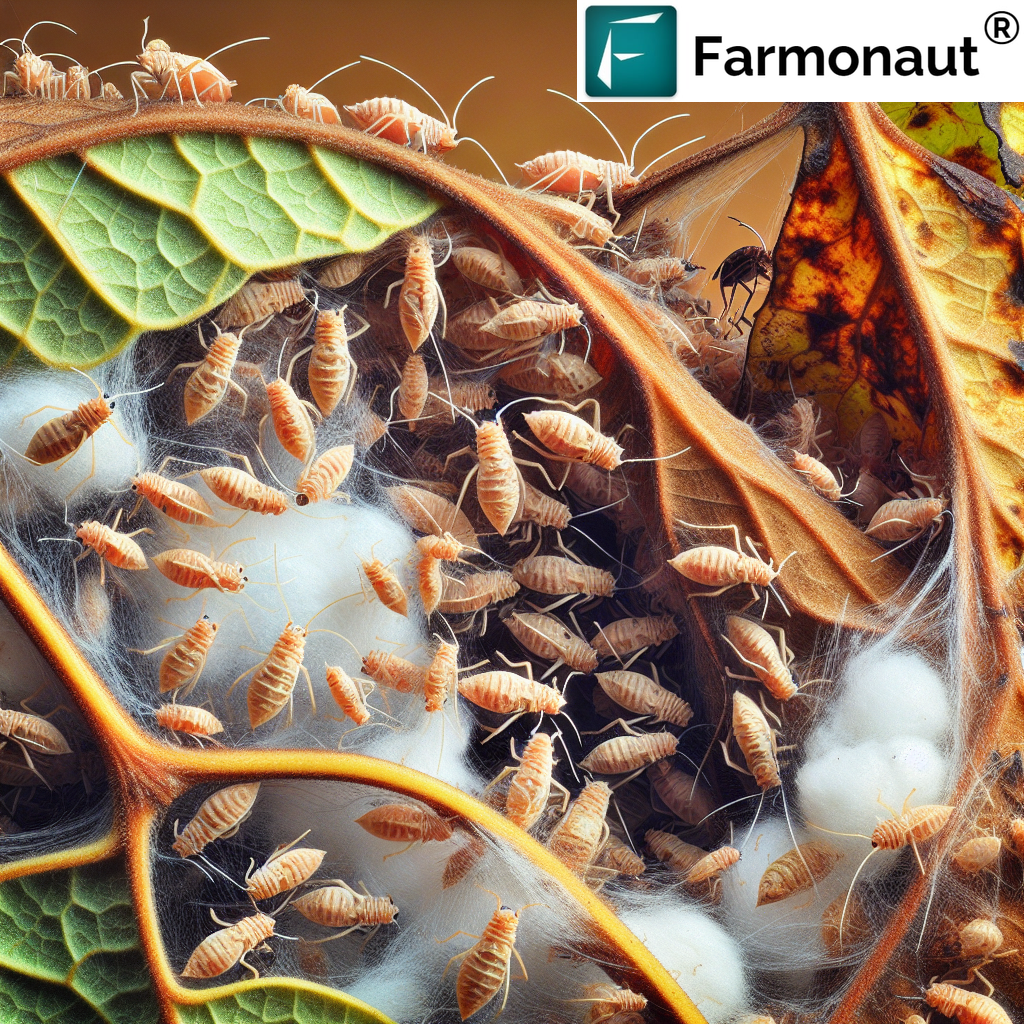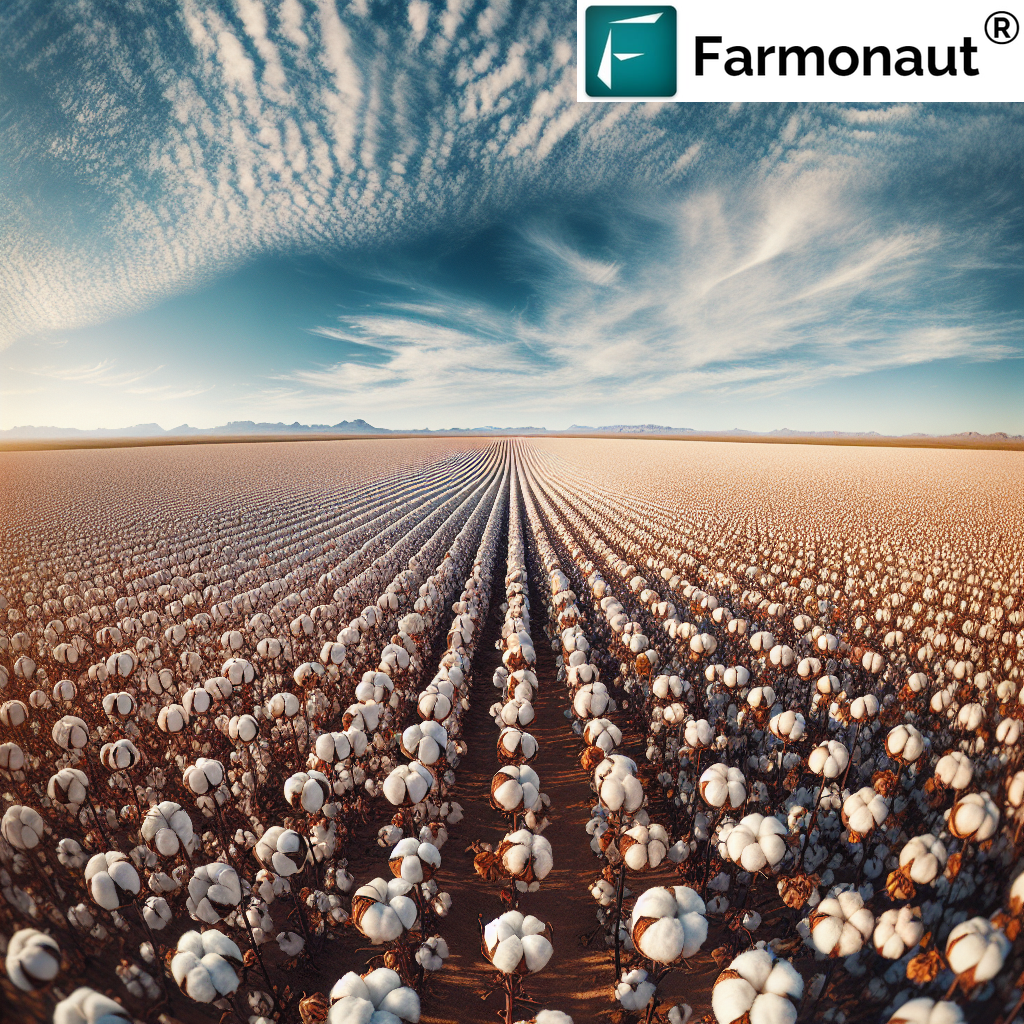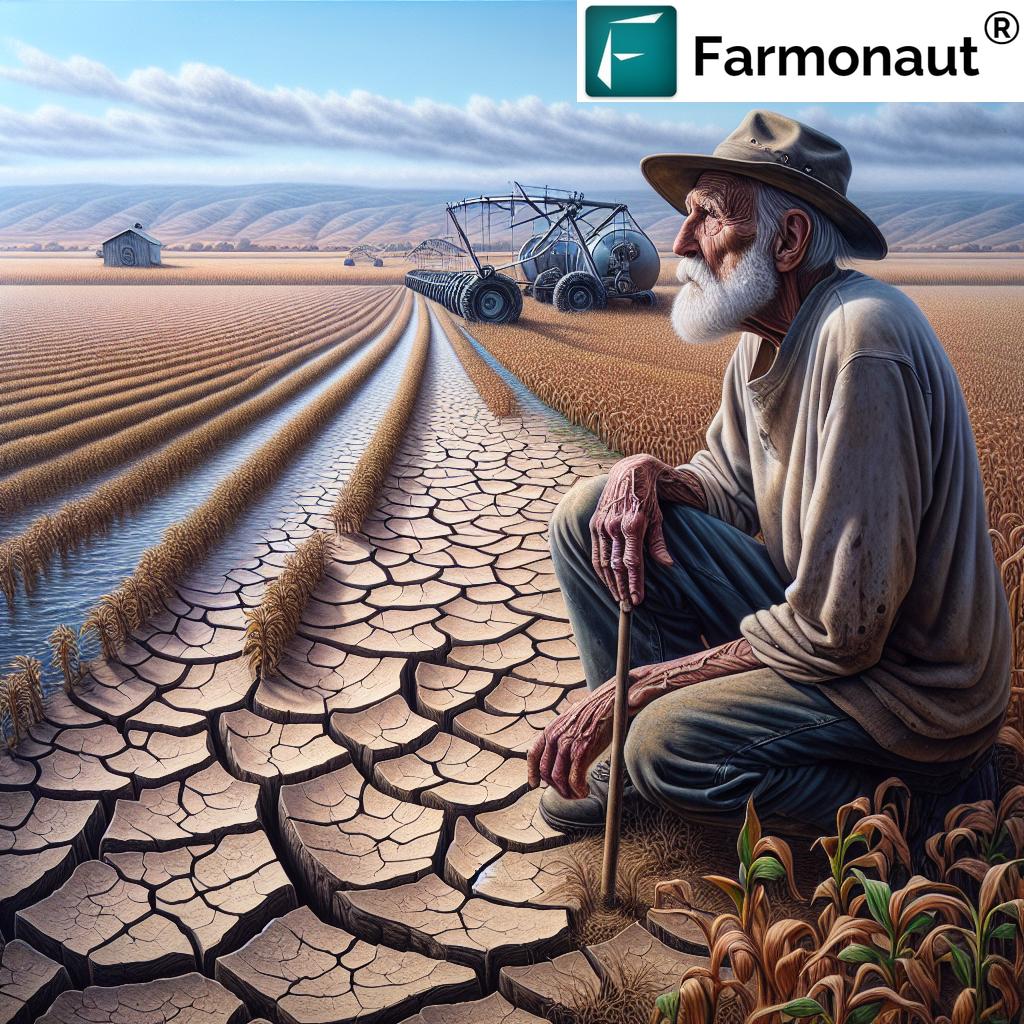Cotton Cultivation: From Arizona Fields to BC Farms – Essential Factors, Agronomy, and Water Requirements for Successful Kharif Crop Production

Welcome to our comprehensive guide on cotton cultivation! In this blog post, we’ll explore the fascinating world of cotton farming, from the sun-drenched Arizona cotton fields to the diverse agricultural landscapes of British Columbia (BC cotton). We’ll delve into the essential factors for growing cotton, its agronomy, water requirements, and the challenges faced by farmers in different regions. Whether you’re a seasoned farmer or just curious about this versatile crop, we’ve got you covered!
Table of Contents
- Introduction to Cotton
- Cotton Agronomy: Understanding the Basics
- Essential Factors for Growing Cotton
- Cotton Water Requirements
- Cotton as a Kharif Crop
- Cotton Cultivation in Arizona
- BC Cotton: Adapting to Canadian Climate
- Common Cotton Pests and Diseases
- Cotton Harvesting and Processing
- Increased Cotton Production and Labor Demands
- Sustainable Cotton Farming Practices
- The Role of Technology in Modern Cotton Farming
- FAQs about Cotton Cultivation
1. Introduction to Cotton
Cotton is one of the world’s most important non-food crops, playing a crucial role in the textile industry and various other sectors. The introduction of cotton cultivation dates back thousands of years, with evidence of cotton use found in ancient civilizations across the globe.
As a versatile and renewable resource, cotton has become an integral part of our daily lives. From the clothes we wear to the linens we use, cotton’s soft and breathable fibers make it an ideal material for countless applications.
2. Cotton Agronomy: Understanding the Basics
Cotton agronomy refers to the science and practice of cotton production, including soil management, plant nutrition, and crop protection. Understanding the principles of cotton agronomy is essential for successful cultivation and optimal yields.
Key aspects of cotton agronomy include:
- Soil preparation and management
- Seed selection and planting techniques
- Nutrient management and fertilization
- Irrigation practices
- Pest and disease control
- Harvesting methods
By mastering these aspects, farmers can improve their cotton production and ensure the health and productivity of their crops.
3. Essential Factors for Growing Cotton
What are the factors essential for growing cotton? This is a crucial question for any aspiring cotton farmer. Let’s explore the key elements that contribute to successful cotton cultivation:
- Climate: Cotton thrives in warm, sunny conditions with a long growing season.
- Soil: Well-drained, fertile soils with good water-holding capacity are ideal for cotton growth.
- Water: Adequate water supply is crucial, especially during critical growth stages.
- Sunlight: Cotton requires full sun exposure for optimal growth and boll development.
- Temperature: Optimal temperatures range from 60°F to 95°F (15°C to 35°C).
- Nutrients: Proper fertilization with nitrogen, phosphorus, and potassium is essential.
- Pest and disease management: Effective control measures are necessary to protect the crop.
By ensuring these factors are met, farmers can create an environment conducive to healthy cotton growth and high yields.
4. Cotton Water Requirements
Understanding cotton water requirements is crucial for efficient irrigation management and optimal crop growth. Cotton is known for its relatively high water demand, especially during certain growth stages.
Cotton water needs vary throughout the growing season:
- Germination and seedling stage: Moderate water requirements
- Vegetative growth: Increasing water demand
- Flowering and boll development: Peak water requirements
- Boll opening and maturation: Decreasing water needs
On average, cotton requires about 700-1300 mm of water per growing season, depending on climate conditions and soil type. Efficient irrigation strategies, such as drip irrigation or precision sprinkler systems, can help optimize water use and improve crop yields.
5. Cotton as a Kharif Crop
Cotton is a kharif crop in many parts of the world, including India and other tropical and subtropical regions. Kharif crops are typically sown at the beginning of the rainy season and harvested in autumn.
As a kharif crop, cotton benefits from the monsoon rains, which provide the necessary moisture for germination and early growth. However, it’s important to note that excessive rainfall can be detrimental to cotton, leading to waterlogging and increased disease pressure.
In regions where cotton is grown as a kharif crop, farmers must carefully time their planting to coincide with the onset of the monsoon season while also considering factors such as soil temperature and the risk of early-season pests.
6. Cotton Cultivation in Arizona

The Arizona cotton fields are renowned for their high-quality cotton production. Arizona’s hot, dry climate and long growing season make it an ideal location for cotton cultivation. However, farmers in this region face unique challenges, particularly in terms of water management.
Key aspects of cotton farming in Arizona:
- Irrigation-dependent cultivation due to low annual rainfall
- Use of drought-tolerant cotton varieties
- Implementation of water-efficient irrigation techniques
- Pest management strategies adapted to the local climate
- Focus on sustainable farming practices to conserve resources
Arizona’s cotton industry has made significant strides in improving water use efficiency and adopting sustainable practices to ensure long-term viability in the face of water scarcity challenges.
7. BC Cotton: Adapting to Canadian Climate
While not traditionally known for cotton production, British Columbia (BC cotton) has seen growing interest in cotton cultivation in recent years. The challenges of growing cotton in BC’s cooler climate have led to innovative approaches and the development of cold-tolerant cotton varieties.
Adapting cotton cultivation to BC’s climate:
- Selection of short-season cotton varieties
- Use of plasticulture techniques to warm the soil
- Implementation of frost protection measures
- Careful timing of planting and harvesting
- Exploration of greenhouse or high-tunnel production methods
While BC cotton production is still in its early stages, ongoing research and experimentation may lead to expanded opportunities for cotton cultivation in non-traditional regions.
8. Common Cotton Pests and Diseases
Cotton is susceptible to a variety of pests and diseases that can significantly impact crop yield and quality. Understanding these threats is crucial for effective management and prevention.
Common cotton pests include:
- Cotton hoppers: These sap-sucking insects can cause severe damage to cotton plants, particularly during the vegetative stage.
- Bollworms
- Aphids
- Spider mites
- Whiteflies
Major cotton diseases:
- Bacterial blight
- Fusarium wilt
- Verticillium wilt
- Cotton leaf curl virus
- Root rot
Cotton is affected by these pests and diseases in various ways, including reduced plant vigor, yield loss, and quality degradation. Integrated Pest Management (IPM) strategies, including biological control, cultural practices, and judicious use of pesticides, are essential for maintaining healthy cotton crops.
9. Cotton Harvesting and Processing
How is cotton harvested and processed? This question is crucial for understanding the journey of cotton from field to fabric. Let’s explore the steps involved:
- Harvesting: Cotton is typically harvested mechanically using cotton pickers or strippers. These machines remove the cotton bolls from the plants.
- Ginning: The harvested cotton is sent to a gin, where the fibers (lint) are separated from the seeds and other plant material.
- Baling: The cleaned cotton lint is compressed into large bales for easy transport and storage.
- Grading: Cotton is graded based on various factors, including fiber length, strength, and color.
- Processing: The raw cotton is then processed into yarn or fabric through spinning, weaving, or knitting techniques.
Modern harvesting and processing technologies have significantly improved the efficiency and quality of cotton production, allowing for better utilization of this valuable crop.
10. Increased Cotton Production and Labor Demands
The increased cotton production and the need for more agricultural labor have been significant trends in the cotton industry. As global demand for cotton continues to rise, farmers are under pressure to increase yields and expand production areas.
Factors contributing to increased labor demands:
- Expansion of cotton cultivation areas
- Adoption of labor-intensive organic farming practices
- Seasonal nature of cotton harvesting
- Need for skilled workers to operate advanced machinery
- Quality control requirements during harvest and processing
While mechanization has reduced some labor requirements, the cotton industry still relies heavily on human labor, particularly in developing countries. Balancing labor needs with fair wages and working conditions remains a challenge for the industry.
11. Sustainable Cotton Farming Practices
As the global focus on sustainability intensifies, the cotton industry is increasingly adopting environmentally friendly practices to reduce its ecological footprint.
Key sustainable cotton farming practices include:
- Water conservation through efficient irrigation systems
- Integrated Pest Management (IPM) to reduce chemical use
- Crop rotation to improve soil health
- Use of organic and bio-based fertilizers
- Conservation tillage to reduce soil erosion
- Adoption of drought-tolerant and pest-resistant cotton varieties
These practices not only benefit the environment but also help farmers reduce input costs and improve long-term productivity.
12. The Role of Technology in Modern Cotton Farming
Technology is revolutionizing cotton farming, enabling more precise and efficient cultivation practices. At Farmonaut, we’re at the forefront of this agricultural revolution, providing cutting-edge solutions for cotton farmers worldwide.
How Farmonaut’s satellite-based farm management system benefits cotton farmers:
- Real-time crop health monitoring using NDVI and other vegetation indices
- Early detection of pest infestations and disease outbreaks
- Precise irrigation management based on soil moisture data
- Yield prediction and harvest planning assistance
- Weather forecasting and alerts for optimal farm operations
Our advanced technology helps cotton farmers make data-driven decisions, optimize resource use, and improve overall farm productivity. To learn more about how Farmonaut can transform your cotton farming operation, visit our app page or explore our API services.
Farmonaut Satellite System vs. Drone and IoT-based Farm Monitoring
| Feature | Farmonaut Satellite System | Drone-based Monitoring | IoT-based Monitoring |
|---|---|---|---|
| Coverage Area | Large-scale (Global) | Limited (Local) | Limited (On-site) |
| Data Frequency | Regular updates (3-5 days) | On-demand (Manual flights) | Continuous (Real-time) |
| Initial Setup Cost | Low | High | Medium to High |
| Maintenance | Minimal | Regular (Equipment upkeep) | Regular (Sensor maintenance) |
| Ease of Use | High (User-friendly interface) | Medium (Requires training) | Medium (Technical setup) |
| Data Analysis | Advanced AI-powered insights | Manual interpretation required | Automated data collection |
| Scalability | Highly scalable | Limited by equipment and regulations | Scalable but requires infrastructure |
As you can see, Farmonaut’s satellite-based system offers unique advantages for cotton farmers, combining wide coverage, cost-effectiveness, and advanced analytics. To get started with Farmonaut, download our app for Android or iOS.
13. FAQs about Cotton Cultivation
- Q: What causes flare square in cotton?
A: Flare square in cotton is typically caused by insect damage, particularly from cotton fleahoppers or plant bugs. These pests feed on the young squares (flower buds), causing them to turn brown and fall off the plant. Proper pest management is crucial to prevent flare square and ensure healthy boll development. - Q: How do cotton leaves contribute to plant health?
A: Cotton leaves play a vital role in the plant’s overall health and productivity. They are responsible for photosynthesis, producing the energy needed for growth and boll development. Healthy leaves also help regulate water loss through transpiration and serve as indicators of plant stress or nutrient deficiencies. - Q: What are the main challenges in cotton farming?
A: Cotton farmers face various challenges, including:- Water scarcity and irrigation management
- Pest and disease control
- Soil fertility maintenance
- Climate change impacts
- Market price fluctuations
- Labor availability and costs
- Q: How can farmers improve cotton yield?
A: Farmers can improve cotton yield through:- Proper variety selection
- Optimal planting timing and density
- Efficient irrigation management
- Balanced nutrient application
- Integrated pest management
- Use of growth regulators
- Adoption of precision farming technologies
- Q: What is the future of cotton farming?
A: The future of cotton farming is likely to involve:- Increased use of technology and data-driven decision-making
- Development of more resilient and sustainable cotton varieties
- Adoption of regenerative agriculture practices
- Greater focus on water conservation and efficiency
- Expansion of organic and fair-trade cotton production
- Integration of automation and robotics in farming operations
Conclusion
Cotton cultivation is a complex and rewarding agricultural endeavor that requires a deep understanding of agronomy, environmental factors, and modern farming techniques. From the expansive Arizona cotton fields to the emerging BC cotton farms, cotton continues to play a crucial role in global agriculture and industry.
As we’ve explored in this comprehensive guide, successful cotton farming depends on various factors, including climate, water management, pest control, and sustainable practices. The integration of advanced technologies, such as Farmonaut’s satellite-based farm management system, is revolutionizing the way cotton is grown and managed, offering new opportunities for efficiency and sustainability.
Whether you’re a seasoned cotton farmer or just beginning to explore this fascinating crop, we hope this guide has provided valuable insights into the world of cotton cultivation. By embracing best practices and innovative technologies, we can ensure a bright future for cotton farming that balances productivity with environmental stewardship.
To learn more about how Farmonaut can help optimize your cotton farming operations, visit our website or explore our comprehensive API documentation. Together, we can cultivate success in the ever-evolving world of cotton farming.








